Celebrating 175 Years!
This year we are celebrating 175 years of the Hillsdale County Fair!
And we want to take a trip back in time to look at and celebrate the amazing fairs we’ve had. We will add more history each week!

The Very First Hillsdale County Fair
On January 10, 1851, farmers gathered together to form the Hillsdale County Agricultural Society. On January 14th they officially printed the first Constitution of the Hillsdale County Agricultural Society and soon thereafter formed the idea of presenting a fair of sorts for farmers to participate in. Many people questioned why they should put on a show of agriculture. They asked what benefit this had for people in the county. The Society’s reasoning was as agriculture was progressing quickly at the time, their goal was for farmers around the county to show what they had produced and how they did so. With that knowledge from each farmer, other farmers can be educated and use the different techniques on their own farm to produce more.
The very first Hillsdale County Fair was held on October 15-16, 1851 on the Courthouse Square in Hillsdale. The entries included many kinds of animals, such as oxen, beef cattle, sheep, swine, horses and poultry, many different crops and articles of clothing, rugs, quilts and blankets. The following year, the fair was held in Jonesville on the public square, and entries doubled, making the show quite popular. The location of the fair would alternate between Hillsdale and Jonesville until 1860 when there were finally permanent fairgrounds.
During the fair of 1861, the people noticed there was a lack of men around as they had all gone to war, so this was the year that the first side shows were allowed. One of the first side shows was a fat woman and another was a glass blower. There were others as well, but the people loved them so much that in years to come, it would grow to the common entertainment we have today at fairs all around the country.
Over the next 50 years, the fair would continue to grow and become quite popular thanks to the railroad that first came to Hillsdale in 1843. After the fair was established, people would come from Lansing, Ypsilanti, Toledo, Jackson, Elkhart and Fort Wayne to see “The Most Popular Fair on Earth”. By 1865 the first race track was built with the first harness races being in 1892 and the first grandstand was built in 1872.
WEEK 2 - Hillsdale County Fair History (continued):
As the Hillsdale County Fair became increasingly popular and the location of it often changed year to year, the Ag Society decided they needed to have a permanent place to hold the fair. People were not satisfied with the fair changing location every year, so the Ag Society bought 17 acres of land from John P. Cook and Chauncey W. Ferris.
John Cook & Chauncey Ferris were originally from Cato, NY, but drove the Sauk Trail down to Jonesville, MI and planned to start the first general store. When Hillsdale became an official county, John Cook was appointed treasurer and Chauncey Ferris was appointed secretary. John Cook would become the first treasurer of the Hillsdale County Fair, along with being a member of the Board of Education and a Trustee of Hillsdale College.
After the purchase of the land, some people in Jonesville and the northern half of the county weren’t happy with the permanent location of the fair being in Hillsdale, and decided not to exhibit that year. They would then form a rival association called the “Farmers, Mechanics and Stock Breeders Association”. This association held their own fair for about 10 years before the stock holders sold their land to the Lakeshore & Michigan Southern Railroad branches in Lansing and Jackson.
In 1861, an appeal was put in the newspaper asking the people of Hillsdale county to help in making the fairgrounds the most beautiful in the state. They wanted to clean up the grounds and plant every species of tree that had ever grown in the county. By 1865, the first race track was built and the first grandstand was constructed in 1872. Not long after the first harness races would debut in 1892. By the late 1900s, the dirt race track was considered one of the finest in the state. Familiar buildings would slowly be built in years to come. Those buildings that we all know today would become the Grange Hall, Merchants Hall, Women’s Congress building and 4-H Dining Hall.

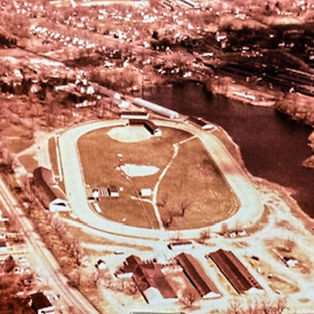



WEEK 3 - Hillsdale County Fair History (continued):
After the first dirt race track was built in 1865, next would come the first grandstand in 1872. Along with the grandstand, a baseball field would be built on the inside of the dirt racetrack with the first baseball tournament in 1919. The original grandstand seated 750 people and was built east of the track, facing the west. After some time, the fair board noticed the grandstand should face the east instead of the west so spectators wouldn’t have to battle the sun in their eyes. In 1888, the track was moved to the west side, where it sat for 50 years and then moved back to the first location in 1938. There the grandstand was expanded to seat 5000 people to watch races and baseball games.
Dr. L. H. Wheaton would be the man to manage an annual baseball tournament from its beginning in 1919 to its end. The well known tournament would have players such as Ned Garver of the 1955 Detroit Tigers, Charles Maxfield, Ray Herbert and Bucky Crouse, who was once voted MVP of the National League. In 1892, when harness racing was introduced to the fair, they would then have both baseball games and harness races happening at the same time.
The fair board would later add another 1000 seats to the grandstand to accommodate the many people coming from all around to watch the famous harness races. For almost 120 years, the harness races would be a staple of the Hillsdale County Fair. Over the years, the grandstand has welcomed fans for all kinds of entertainment; from demo derbies to tractor pulls to headlining concerts.







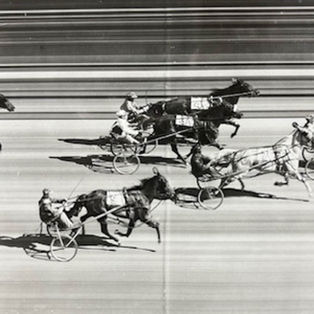
WEEK 4 - Hillsdale County Fair History (continued):
After the grandstands were built, the first harness races were introduced to the fair in 1892. Harness racing had become increasingly popular in the state of Michigan and could be seen at 33 different county fairs throughout the summer and fall.
Taken from The History of the Hillsdale County Fair, “In harness racing, a driver in a sulky drives a horse at trotting or pacing gait…The sulky weighs about 45 pounds, including 8-pound bicycle type wheels. The driver sits low in the cart and close to the horse. All races are over prepared dirt and clay tracks.” When the race track was first constructed a holding room was built for women to wait while their husbands enjoyed the races. At the time, it was uncommon and unladylike for women to attend the races. By 1968, the state of Michigan gave women the chance to race and eight women would join in harness racing that year.
Local harness racer Pat Kelly would become well known for her first win at the Hillsdale County Fair. She came back from fourth place to win with a time of 2:12.1. There would be more women who would impress at these races. By 1971, eight women were vying for the chance to be called the best when they competed in a race in Jackson, MI. Between the eight women, they had more than 600 victories, three of them held world records in harness racing and two were battling to be the leading race winner.
It became a well known staple of the fair by the early 2000s, and continued for more than 120 years. By the 2010s, harness racing would no longer be something people came to see at the fair. But many photos and memorabilia can be seen at the Hillsdale County Fair museum during fair week.





WEEK 5 - Hillsdale County Fair History (continued):
Established in 1897, the Women’s Congress was formed for the purpose of bringing women from the city and women from the countryside together. Their goal was to bring the women together to educate one another and be a mental and moral uplift. In 1893, Kate Ward had attended the World’s Fair in Chicago, and the following year attended the Woman’s Auxiliary at the Eaton County fair. She saw the good that the groups were doing and together with Helen Perrin Hunker formed the idea of creating the Women’s Congress in Hillsdale County.
It took 3 years for them to officially form the Women’s Congress, and Kate Ward was the first president. They held the event in one single tent on the fairgrounds but they would eventually need two tents. While the extra room was good for the growing organization, the placement of the tents became a problem. They would find that one year they were placed next to loud machinery, making it difficult to hold speaking events. Other years they were placed next to loud animals and at one time having geese go into the tent making all kinds of noise. Each year they would write letters to the fairboard requesting to have a better area for meeting or simply their own building. Eventually the fair board would allow them to move into a building that formerly housed chickens during the fair as it was too small for the chickens that were exhibited.
Over the years, the Women’s Congress would have many special speakers such as the governor of Michigan, presidents of various colleges, the manager of the Michigan State Fair, State Representatives, Senators and many others. In the early years they would hold a morning program and afternoon program, but they would cancel the morning programs by 1956. Today, they still hold daily programs during the fair week, and all are invited to attend.

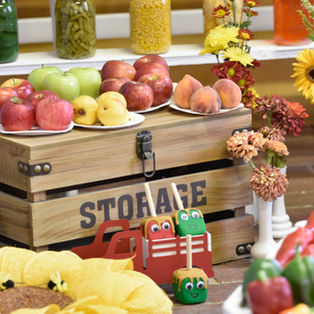
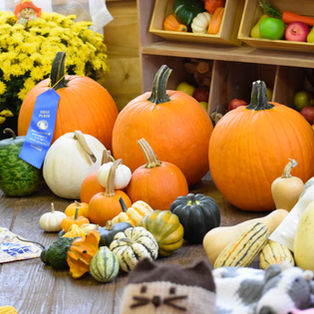


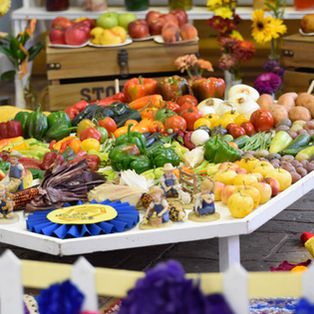






WEEK 6 - Hillsdale County Fair History (continued):
The Grange hall was built in 1879 with the purpose of providing a place for members of The Grange to have a place to exhibit their farm grown goods. The Grange, established after the Civil War, is an agricultural organization meant to bring together farming communities in different socioeconomic backgrounds. The Grange Hall was specifically built for these members to showcase their talents of growing produce, canned goods, and making of clothes. The inspiration of the design comes from old farm mills of the 1870s. Some stories about the building say that it was originally called the Mechanics & Agricultural Hall before officially becoming the Grange hall.
By 1870, Hillsdale County had 18 Grange chapters and they were looking for a way to display what they could do to the people in the city. They wanted to show that they could produce many varieties of vegetables, fruits, grains, hays, jams, jellies, among others. The farmers thought it was a good way to recruit more members and grow the farming community. Once the hall was built, there was only room for 12 chapters to exhibit at a time, so they rotated each year.
Many displays showed homemade cheeses, eggs of chickens, geese and ducks, pickled pigs’ feet, and many varieties of popcorn. Others showed preserves, squashes, dairy products, fruits and vegetables, nuts and different grains. There would also be a display from the Michigan Centennial Association.
There were only eight Grange chapters by 1950, and today there remain three. Displays are still held at the Grange Hall as vegetables, fruits, grains, canned goods and much more can be seen in beautiful colorful displays. Along with those displays, there is the exhibit of wine making and wool making that can be seen during fair week.
.jpg)
WEEK 7 - Hillsdale County Fair History (continued):
The Floral Hall was originally built in 1866 and funded by selling notes/bonds along with an additional $500 raised by a ladies group of fair supporters. The foundation was designed like a Greek cross with an observatory shaped like an octagon in the middle. Above that was a bell tower, and later there was a dome that led up to the symbol of a plow. It was the first real building to be built on the grounds since purchasing the land.
Initially the building was constructed for more exhibits to be shown. It started with a large number of items of cotton, linen and wool. The ladies of the county would make all kinds of clothing pieces and blankets. Exhibits such as shawls, blankets, afghans, and other sewn, knitted, or crocheted articles can still be seen in the Floral Hall today as that tradition has not changed. Among the many fabrics, there were also some produce exhibits and a section for mechanical machinery to be displayed. In 1926, on the north side of the building, an addition was made for more exhibits and concessions. Eighty years later, in 2006 the addition would be renovated for art and antique exhibits, which can still be seen at this year’s fair.
There was also a section of the building where members of the Hillsdale Business Institute exhibited paintings, works of penmanship, photos, and items of clothing. Later the building would become known as the Old Merchants Hall as merchants would come to display their businesses and even sell a few goods. From 1970 to 2016 the building would be referred to as the Old Merchants Hall before going back to being called Floral Hall.
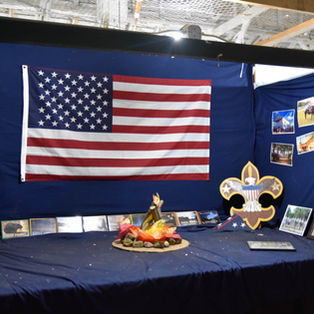






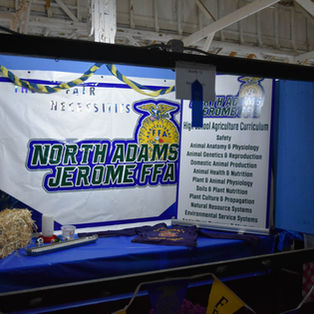
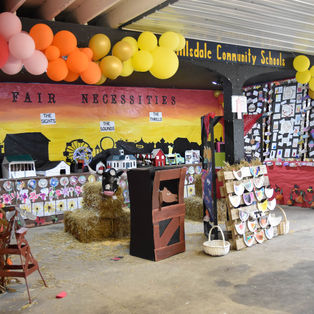
WEEK 8 - Hillsdale County Fair History (continued):
The Education building was built in the late 1860s for the very purpose of its name: educating. The Hillsdale County Fair itself began as a way to educate one another on agriculture, so as this building was constructed for more exhibits, they would eventually make it available for all schools in the county to exhibit something as well.
While it wasn’t mandatory that each school exhibit something, many schools became interested. Initially, many students made all kinds of art such as drawings and paintings, and some would write poems to display in large letters on the walls. As time went on, they would start consolidating schools, which would make displaying for each school slightly easier. At first, because there were many schools in the county, there weren’t always enough places to display what the students had learned, along with the issue of choosing which grade would do a project that year.
When you go to the Hillsdale County Fair this year, you’ll still see many schools putting up displays of each year’s fair theme. Upstairs, in the education building, you can see FFA programs along with a few churches who at some point began participating as well. Learning and educating are still alive and well within the Education Building, so be sure to stop by to show some school pride!
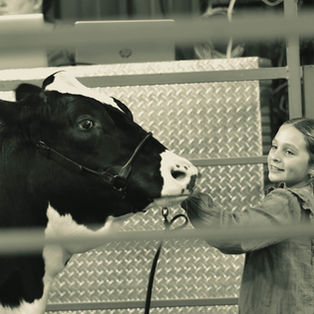



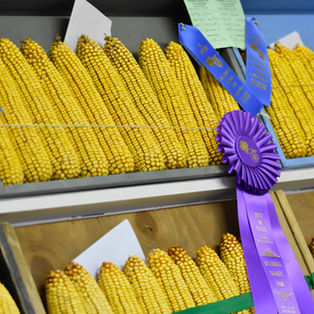
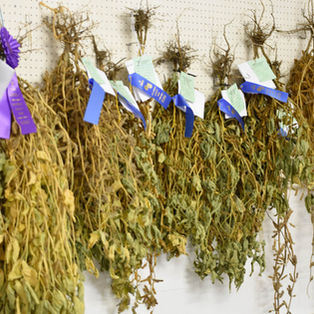

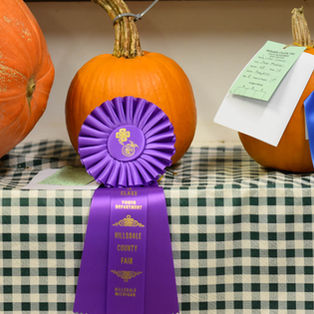




WEEK 9 - Hillsdale County Fair History (continued):
The Hillsdale County Fair 4-H program started in 1914 with a simple tent set up for exhibits. But, as the exhibits became more and more, a 4-H building was constructed. We don’t know the absolute year the building was constructed, but it has been said to be built in 1926, and was supposedly the first 4-H building in the state. In 1947 a stock barn was added and expanded in 1948. In 1961 the 4-H building burned down and a new one was built in 1962.
The organization has the quote of “To make the best better”, and was adopted in 1927 after 4-H members and leaders attended the National 4-H Club Camp in Washington, D.C. A quote from the book History of the Hillsdale County Fair, “It expresses a continuing goal of excellence - take the best one has been given, enhance it, and give it back to life better than before.” The 4-H Pledge is repeated often to remind us how to use our head, heart, hands and health “To make the best better.”
As the 4-H program continued to grow, one man would start a club that would blossom into something bigger. Bob McClelland, from Reading, devoted more than 85 years of his life to helping 4-Hers learn and grow in agriculture. After his first 25 years of service, he was given a “This Is Your Life” party to commemorate all that he had done at the time. Later he would be given the honor of “Citizen of the Month”. Taken from the book, History of the Hillsdale County Fair, “Bob realized early on that in order for youth to stay interested and to grow into a team, he would have to do more than just focus on a once a year event. Therefore he created a complete calendar of events to keep the spark of interest kindled within the easily bored youth.” Bob would create all kinds of activities for 4-Hers to stay involved all year long, such as awards banquets, fundraisers, holiday parties, and talent shows. He wanted kids to get involved and stay involved. His first 4-H club consisted of only 6 boys, and was named the Jolly Jill Club, then renamed to Victory Livestock Club and eventually landing on Willing Workers.
Today, there are many different 4-H clubs still involved and making the best better every day. Since the start of 4-H at the Hillsdale County Fair, many different categories have been added for youth to get involved in every way, from livestock to non-livestock projects to enter. Be sure to stop by the 4-H building and check all the hard work our local youth give “To make the best better.”
WEEK 10 - Hillsdale County Fair History (continued):
As this year we are celebrating 175 years of the Hillsdale County Fair, let’s go back 75 years to the Centennial Fair. As the fair had been established and still going strong 100 years later, it was anticipated to be one of the most exciting fairs to date. Exhibitors were ready to present their projects, 4-Hers were gearing up to show their animals, and fair goers were buzzing to see the entertainment. It was set to be the event of the year in Hillsdale County, and news of the Centennial Fair had reached as far as Petoskey, MI.
Many exciting events were scheduled to be held the third week of September. One anticipated event was the selection of the Fair Queen. It was slated for the last night of the fair with nine contestants from schools in the county. The candidates were voted on by the student council or student body. The selected ladies competed on the basis of personality, popularity, beauty, poise and school citizenship. Another event was a new playground for kids. But one of the main events was the Veteran Motor Car Club of America members driving their antique cars to the fair to commemorate the history of the Model T Ford. Once Henry Ford invented the Model T Ford, fair goers all around Hillsdale and surrounding areas were quick to purchase a car. No longer did families have to get an early morning head start on travelling to the fair in a horse and buggy.
While there were many anticipated events set to happen at the Centennial Fair, one aspect that can be overlooked is how hard 4-H mothers were working during that week. During the fair week, some 4-H members stayed in the 4-H building while they exhibited their animals and projects. Ten volunteer mothers arrive at the fairgrounds 3 days prior to the fair to clean and ready the dormitory. And during the week, they do shifts of making beds, picking up after the kids and cooking meals. They cooked 21 meals during the week for the 4-Hers along with cooking food for the public every day at noon.
One of the themes that year was “This is Your Fair” and exhibitors and fair goers alike made it one to remember.

WEEK 11 - Hillsdale County Fair History (continued):
Have you ever thought about why the Hillsdale County Fair has been coined “The Most Popular Fair on Earth”? While it’s not pinpointed when the phrase began being used, there are plenty of reasons to understand why no one really questions it after visiting.
In 1950, the Hillsdale Daily News published a story of a Chicago man describing his experience with the phrase. He recalled riding the train through Hillsdale County on his way to wherever he needed to conduct his business, and seeing the words “The Most Popular Fair on Earth” on the side of a building on the grounds. At first he thought it was “egotistical” of Hillsdale County Fair to call themselves as such, but after asking the train conductor about it, the Chicago man felt the need to experience it himself.
The conductor talked about the excursions he would take during fair week and how far people would come. In Indiana, people came from Elkhart and Fort Wayne, from Michigan they came as far as Ypsilanti, Lansing and Jackson. The conductor talked about doubling from Toledo and back with all the people who wanted to see the Hillsdale County Fair. He talked about how busy it would be at the station, stating “...the depot is sometimes quite a hindrance to us. Often they are so crowded they have to pass the last station or two without stopping, and then back up and get the crowd. Egotistical - NO I don’t think so.”
The Chicago man went on to tell of his own experience at the Hillsdale County Fair. When he finally retired, he and his wife moved to be closer to his daughter and son-in-law in Bronson, MI. The first thing he noticed were people and towns putting out signs letting others know when the Hillsdale County Fair was scheduled to happen. His son-in-law called him one evening to tell him they’re all going to the fair. When the Chicago man entered the fairgrounds, he noticed a difference in the air. He said, “What a fine time we had. I never saw such a well kept fairground, or such a large orderly crowd. So much hand shaking and visiting. Seemed like my son-in-law knew about half the crowd! Folks I had never seen visited with me and it appeared to be a reunion and homecoming combined.”
The Hillsdale County Fair would continue to be memorable for many years to come. With growing entertainment and exhibitors, great food, and fair rides that would become a staple. As the Hillsdale Daily News once said, “...Hillsdale is just a little different. The crowds here, seemingly, are not composed of people, they are Folks and to them the Hillsdale Fair is an annual reunion and homecoming.”






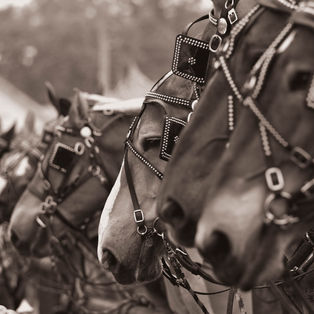
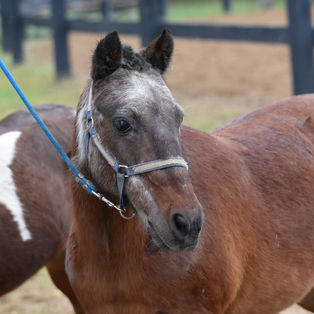
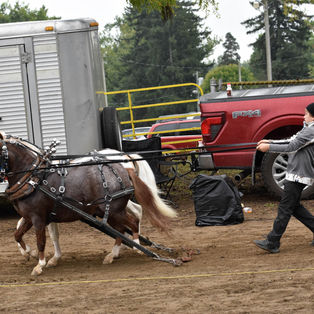





WEEK 12 - Hillsdale County Fair History (continued):
“Teamwork makes the dream work”. That’s how the famous saying goes nowadays. And one animal that knows the quote better than others is a horse. More importantly, pulling horses. Horse pulling began at the Hillsdale County Fair somewhere around 1927 and is a tradition that still carries on today.
Horse pulling requires horse teams to pull a load 27 1/2 feet. The weight of the load will depend on which weight class the horses are in. The teams will start with a light load and work their way up to a heavier load. Each team is given 3 tries to pull a load and the team that pulls the heaviest load the farthest are the victors.
Pony pulls began when some locals started the “Bits and Harness Pony Club” and got together to pull ponies for fun. The Michigan Dynamometer Pony Club began in 1965 and would slowly make their way to the Hillsdale County Fair where they became a staple. Pony pulling became increasingly popular because of how cheap the ponies were and they move much quicker than the larger horses. And instead of having classes by weight, they have classes by height.
You can still see both horse pulling and pony pulls at the Hillsdale County Fair. They’re a symbol of strength, teamwork and relentlessness.

WEEK 13 - Hillsdale County Fair History (continued):
When the county fair takes place in late September, you can’t always be sure about how the weather will be. Sometimes it’s a bit chilly and other years it’s warmer. One thing you can always count on is the entertainment that is always there, rain or shine. Things to see and do at the Hillsdale County Fair have come a long way since 1851, and each is as much fun as the last.
Sideshows and entertainment at the Hillsdale County Fair started in 1861, just 10 years after it began. While the initial intention of the fair wasn't entertainment, but to educate one another in agriculture, things have changed in the last 175 years. In 1893, George Washington Ferris began the very first ferris wheel. Mr. Ferris designed a ferris wheel to give people the enjoyment of riding around a wheel and seeing sights for miles while up high. His goal was to make something as amazing as the Eiffel Tower. While making something as great as the Eiffel Tower is quite the feat, the ferris wheel is still a staple at almost any county fair. His very first ferris wheel took 20 minutes to ride all the way around, and was called a “pleasure wheel”. It debuted at the 1893 Chicago World Fair and was a huge success and would become the classic ferris wheel we know and enjoy today.
The ferris wheel at the 1893 Chicago World Fair would be named a “midway” which is where we get the common term we know today. We go down to the midway to see what vendors have to sell, eat our favorite fair foods, get on rides that are ready to be ridden and play games that are ready to be played. Entertainment at the Hillsdale County Fair has come a long way since 1861 and we look forward to more this year!

